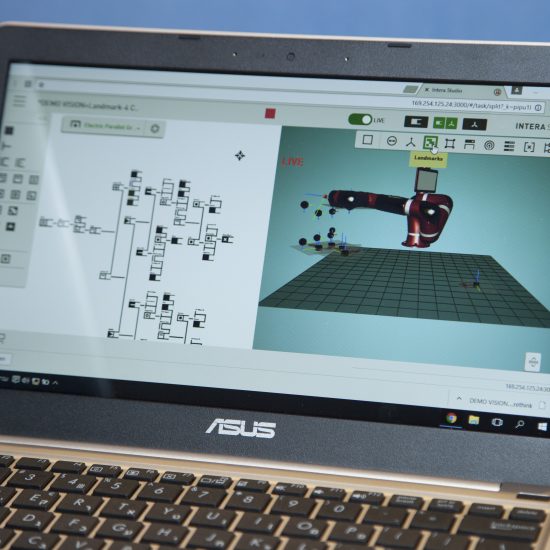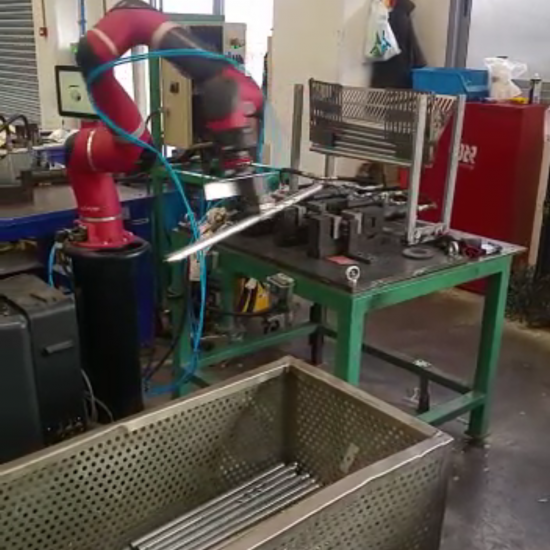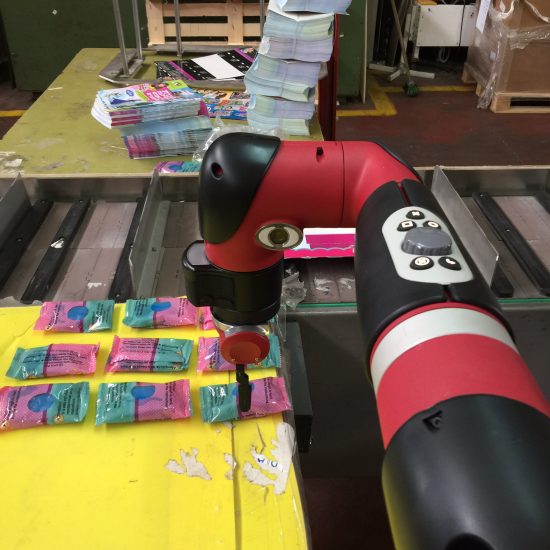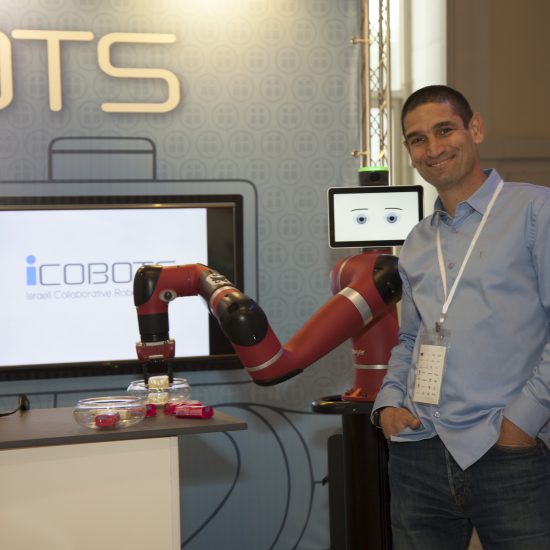The Guide to Buying Cobots - 7 Focal Points in Evaluating and Buying Cobots
Thanks to advances in collaborative robots, Cobots are growing at a pace that significantly increases productivity and improves quality of operation. Today’s Cobots are safe to work in a human environment, occupying a significantly smaller workspace relative to robots and classic automation, cheap enough to show less than two years’ investment returns and in less than a year’s applications, and suitable for application not only in huge factories but also in small and medium-sized production halls. Production is relatively short.If you have come to a decision that you would like to purchase Cobot, there are a number of important questions you should consider in order to choose the best solution that suits your needs.
Overall Cost - The arm price label is not the true application cost
Think about the overall solution and what it consists of, when comparing solutions, consider what you will need to purchase in some cases from third parties in addition to the arm, how much will the integration cost? How much will the programming cost? These components usually increase the total cost by 2 times or 3 times the price of the arm (sometimes more).Before proceeding to consider the alternatives, prepare a list of applications for Cobots on your production floor, and prepare from this list the range of features you need, such as:
- Maximum arm length
- Degree of freedom of arm
- Grippers that required
- Power sensing capability
- Control the power level that the Cobot exerts
- Integrating vision systems for parts detection
- Integrating vision systems for quality control
- Level of repeatability
- Quantity of Stuffs
- Weight required for lifting
- Importance of Simplicity of Operation
- Maintenance cost
- Cost of software licenses
- Quality of support and service

When you consider a return on investment that takes into consideration the hardware, software, integration in the work compartment, vision systems cost, employee training cost, hours of operation of cubicles, cost of development of grippers, and other adjustment costs. The World Robotics Association offers a Feasibility Analysis Calculator – so go ahead!
Software: Expert software or intuitive software
The world of manufacturing is approaching a point of change, and new technologies are changing the way production floors operate, learn, and connect. The Cobot you choose should include a combination of hardware and software that will meet the following needs:
- An intuitive user interface that every employee can understand
- Ability to control other industrial equipment in the Cobot environment
- The ability to direct the power, both to aim and to apply, in which action or part of the fixer is performed.
- Connectivity and pace to the rest of the work compartment, and the ability to properly understand and operate the arm attached gripper
- Ability to embed the workspace and respond proactively and quickly to required adjustments while working, or to changes in the work compartment (e.g. when the Cobot is moved to a new unfamiliar work station)
- Ability to get software updates to open new capabilities to Cobot and better utilize existing hardware.

Application speed - days and not weeks
One of the absolute advantages of some of the Cobots in the market is the speed of application, from the cardboard to the regular production line. This is also true in the case of new work chambers, as well as existing work chambers, and especially if you do not need massive work cages and programming – when you have to choose between different Cobots – consider:
-
- How quickly does the supplier commit to “coming out of the carton for regular work”
- Are you getting a complete system or are you purchasing the additional accessories after the Cobot arrives.
- How easy it is for an operator in the line to change an existing program or teach the Cobot a new task.
- Availability of task templates that allow the Cobot
quick training
- Are vision systems, power sensing, and grippers an integral part of the Cobot, or are they a variety of vendors that need integration

Flexibility:
Ability to adjust and change task in the work compartment and move to other tasks and work cells
You may know what application you’re aiming for, but tomorrow your customer will change the requirements, and your production will have to change accordingly – the challenges that you know today, and the ones that will come tomorrow. Cobots can be flexible to withstand significant task changes, and without the need to make massive investments of time, equipment, and money in re-adjusting them.When you look at different Cobot systems, it is worth seeing Cobots’ clips work in diverse tasks and in diverse workspaces on real-world tasks. True application clips provide essential insights into a variety of applications. When looking at applied Cobots, you should focus on:
- What Cobot Missions Perform – Operating Equipment, Testing, Loading and Unloading Machines, Packaging, and the like.
- Do the Cobots have location detection systems. These systems allow Cobots to automatically calibrate to recognized workstations, so if they are moved to a new station and then returned to a recognized station, within seconds they self-calibrate, based on their vision systems.
- How easy it is to teach the Cobot to perform other tasks from the original mission it was assigned
- How long will the production line have to wait while the Cobot learns a new mission – minutes, hours, or days?
- Is the Cobot easy to transport from one station to another?

Simplicity:
Is the Cobot built to be operated by workers or engineers?
User interfaces are all around us – there are screens in the car, on the cell phone in our pocket, in the coffee machine, and in the air conditioning. The user interface should be built for the user, simple and intuitive, and with minimum learning and certification requirements. The same is true for the Cobots, they have to be simple enough for an operator to operate them, and not have to wait for the availability of a maintenance crew or engineer. More details to consider:
- Cobot as a complete system – no additional software or hardware required
- Easy and simple integration with existing equipment
- A graphical user interface with simple, intuitive icons and symbols for understanding
- Connection to a basic power outlet

Safety - Life "outside the cage"
The cobot you choose should have a safety DNA, pre-built for working in a human environment, and for working with people. The most safe Cobots contain the following active and passive safety components:
- Force sensing sensitivity is used to understand the situation, not just identifying a “collision” situation
- Ability to work with delicate parts without damaging them
- Ability to notify malfunctions and problems in real time
- Ability to work gently with expensive equipment located in the Ccobot’s workspace without damaging and harming this expensive equipment

Customer Experience - A Provider Committed to Your Success
In order to maximize the capabilities of the Cobot, and not add additional costs, look for a provider that offers a complete solution, rather than parts of a solution. Look for a provider that offers a wide range of employee training and certification opportunities, as well as examples of proper technology applications including:
- Online User Guides
- User Forums
- wiki
- Tutorials on your production floor
- Online Courses and Tutorials

Cobot Sawyer redefines the world of Cobot
iCobots redefines the perception of the Cobot Distributor in Israel.
Sawyer was not built on traditional robotic concepts, but is a second generation of innovative Cobot technologies. Built based on actual experience and applications on production floors, it incorporates the best of existing technology to give the customer the best possible Cobot at a competitive price. iCobots was established to enable factories in Israel to peak productivity, and to address the growing lack of an unskilled workforce industry. Unlike any robot and Cobot supplier in the market, iCobots allows customers to experiment, hire, operate, and watch the application on the production floor, without having to take big purchasing risks, and with satisfactory programming proven.
